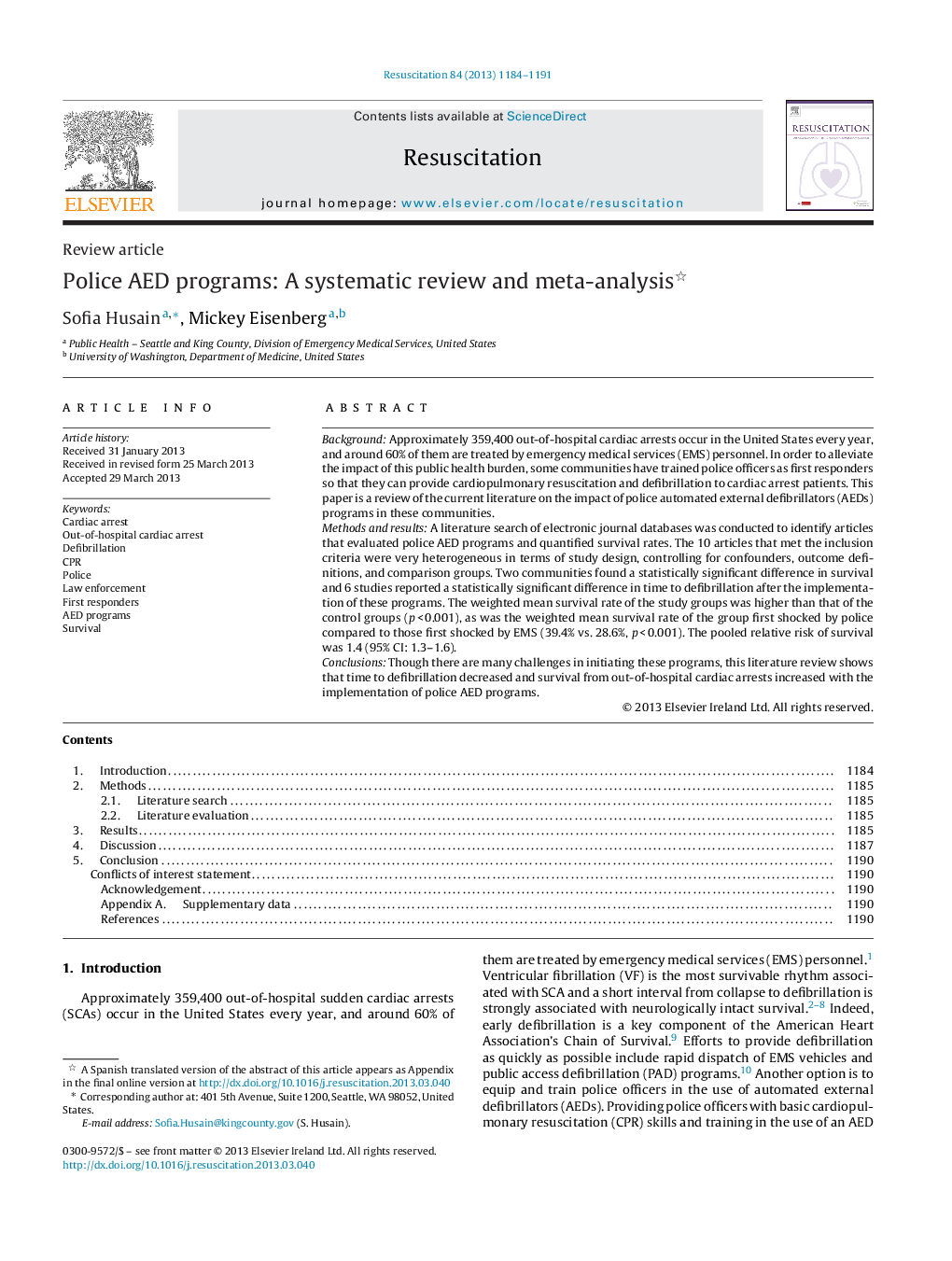| Article ID | Journal | Published Year | Pages | File Type |
|---|---|---|---|---|
| 3008683 | Resuscitation | 2013 | 8 Pages |
BackgroundApproximately 359,400 out-of-hospital cardiac arrests occur in the United States every year, and around 60% of them are treated by emergency medical services (EMS) personnel. In order to alleviate the impact of this public health burden, some communities have trained police officers as first responders so that they can provide cardiopulmonary resuscitation and defibrillation to cardiac arrest patients. This paper is a review of the current literature on the impact of police automated external defibrillators (AEDs) programs in these communities.Methods and resultsA literature search of electronic journal databases was conducted to identify articles that evaluated police AED programs and quantified survival rates. The 10 articles that met the inclusion criteria were very heterogeneous in terms of study design, controlling for confounders, outcome definitions, and comparison groups. Two communities found a statistically significant difference in survival and 6 studies reported a statistically significant difference in time to defibrillation after the implementation of these programs. The weighted mean survival rate of the study groups was higher than that of the control groups (p < 0.001), as was the weighted mean survival rate of the group first shocked by police compared to those first shocked by EMS (39.4% vs. 28.6%, p < 0.001). The pooled relative risk of survival was 1.4 (95% CI: 1.3–1.6).ConclusionsThough there are many challenges in initiating these programs, this literature review shows that time to defibrillation decreased and survival from out-of-hospital cardiac arrests increased with the implementation of police AED programs.
